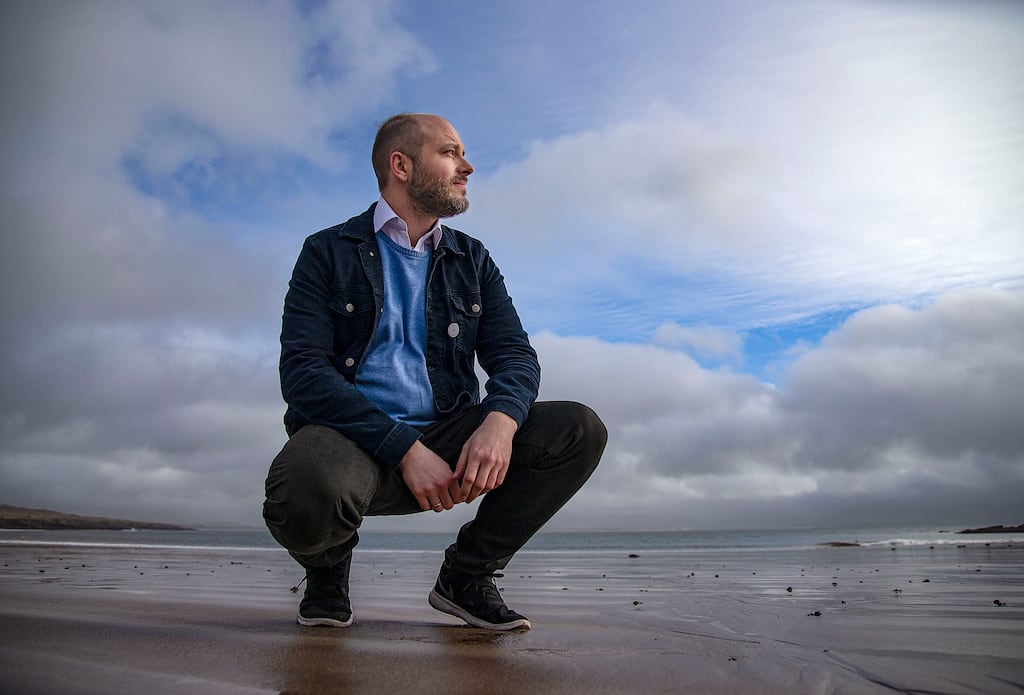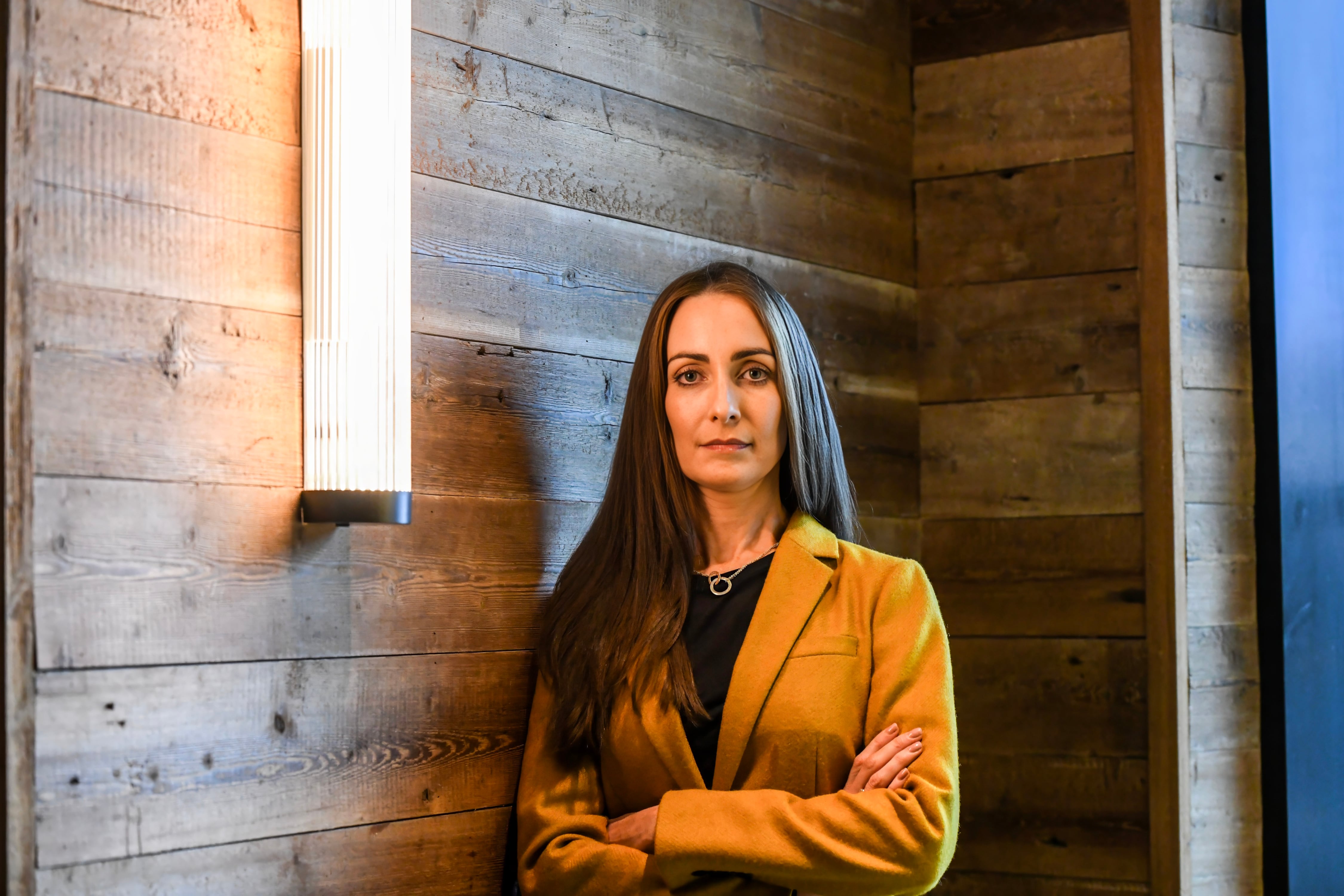Russian native Victor Bayda speaks Irish with a rich Gaeltacht accent. He rolls his Rs and is not afraid to activate those glottal and plosive sounds. He has a fine “blas”, as it’s sometimes called.
I ndáiríre labhraíonn Bayda Gaeilge mar dhuine a tógadh sa ghaeltacht nó, mar a deirtear, labhraíonn sé Gaeilge amhail is go bhfuil an teanga aige ón gcliabhán.
“Mar theangeolaí is féidir liom a rá go bhfuil an Ghaeilge an-éagsúil i gcomparáid le formhór na dteangacha san Eoraip,” a deir sé. “Tá sí an-luachmhar mar rud atá an-difriúil, mar rud go bhfuil go leor sain-ghnéithe ag baint léithi.”
Agus é ag caint faoi luach na Gaeilge deir sé go bhfuil sé rí-thábhachtach go mbeadh ár dteagna féin ag pobal na hÉireann, go háirithe, mar gur linn féin í an Ghaeilge. Cuireann sé an teanga i gcomparáid le seilbh tí.
READ MORE
“Ba mhaith le gach Éireannach tigh dá gcuid féin a bheith acu, tá sé sin fíor-thábhachtach – píosa talúin agus tigh. Sin an rud is tábhachtaí d’Éireannach. Tá sé sin nádúrtha. Is maith linn rud dár gcuid féin a bheith againn. Agus ní le hÉireannaigh an Béarla ... Is píosa beag de domhain an Bhéarla í Éire faoi láthair.”
Dar leis, má tá an teanga chun bláthú nó chun leathnú, caithfear an Ghaeilge a chloisteáil agus a úsáid agus í a chur ar shúile na ndaoine go bhfuil sí in úsaid agus beo.
“Chun daoine nach bhfuil meallta fós a mhealladh, don chuid is mó de na hÉireannaigh, ní chloiseann siad an teanga, ní thagann siad ar an teanga in aon áit. Is mar gheall ar sin go bhfuil sé tábhachtach go mbeadh alt (mar seo) ins an Irish Times i nGaeilge.”
Muna dtugtar aitheantas cuí mar seo don Ghaeilge, brúfar amach ar fad í, dar leis. Agus mar thoradh ar an dearcadh seo, theastaigh ó Victor Bayda go ndéanfaimis an t-agallamh seo go hiomlán trí mheán na Gaeilge agus nach mbeadh Béarla in úsaid ar chor ar bith anseo. In ainneoin sin, chuir an tuairisceoir seo agallamh air i mBéarla lá amháin agus i nGaeilge lá eile.
He speaks with feeling about the experience of all Irish speakers: “When we hear people saying, ‘oh, Irish is no use, it’s a thing of the past’, you feel it personally,” he says. “I, myself, I’m a foreigner but still, when people say about any language that it’s no use, just throw it out, you feel it”.
As an outsider with a unique insight into the dynamics of the language debate, he believes that the Irish language provides a connection and carries a culture of its own, linking people who share common experiences. He mentions listeners to the flagship Raidió na Gaeltachta news program Adhmhaidin, and those who listen to the station’s magazine programme, An Saol ó Dheas, presented by Helen Ní Shé, and says that “these are not just some words to us”.
“These are names that we know – that is something that is common knowledge for a certain group of people. It does create a culture, a certain experience that only people who speak the language have.”
Being a man on a mission, in the south Kerry Gaeltacht, where he is planning officer for the Irish language, Bayda is not afraid to point out that “the Irish language is not part of the lives of most Irish people. A lot of people, they never heard anyone speaking Irish throughout their life ... We can definitely say that there are two cultures that are native to Ireland.”
Tá sé ina chónaí i ndeisceart Chiarraí i gceartlár cheantar Gaeltachta le chúig bliana anois ag plé le ceisteanna na teanga ar bhonn laethúil. Deir sé nach bhféadfadh sé a rá go bhfuil sé ag maireachtáil trí mheán na Gaeilge. Ag an am céanna ní ghlacann sé leis go bhfuil sé diúltach faoi staid na Gaeilge sa tír i gcoitinne. Deir sé go bhfuil sé “réalaíoch” faoi chúrsaí teanga.
“Is ceist í seo: an bhfuil mé ag maireachtáil trí mheán na Gaeilge mar ní féidir maireachtáil trí mheán na Gaeilge in aon áit in Éirinn. Na seirbhísí ar fad, is trí Bhéarla atá siad.”
Mar léargas breise ar cheist seo saol ollmhór an Bhéarla, luann sé cás a mhic atá ina dhéagóir agus ag freastail ar mheánscoil sa cheantar: deir Bayda go raibh sé níos éasca dá mhac Béarla a phiocadh suas ná Gaeilge mar is é Béarla a labhrann daoine óga, eatarthu féin.
Deir sé gur “traen faoi lánseol a chaithfear a stopadh seachas snámh in aghaidh easa” atá i gceist agus é ag caint faoi stop a chur le saol mór an Bhéarla. Ach b’fhiú, dar leis, rudaí a athrú ar scoil maidir le múineadh na Gaeilge: “An rud is tabhachtaí ná go mbeadh daoine ag baint taitneamh as an Gaeilge, go mbeadh siad ag iarraidh dul go dtí rang Gaeilge, go mbeadh an rang Gaeilge ar nós rang aclaíochta, gur sos é ó na ranganna ar fad eile ina mbíonn daoine ag suí is ag déanamh cleachta agus ag déanamh rudaí leadránacha. Ba cheart go mbeadh an Gaeilge ina rud gur mian le daoine a dhéanamh.”
As a budding linguist, Bayda was fascinated by languages as a child growing up in Russia. He was studying Celtic languages at university when he came to Trinity College Dublin to spend a term learning and improving his Irish. He taped a number of programmes from Raidió na Gaeltachta and on his return home to Moscow, he started listening. He recalls the intriguing greeting that drew him in and caught his attention – the phrase that he kept hearing was “Bail ó Dhia oraibh” – may prosperity from God be upon you.
One of the features of the language that he loves is the way Irish has slender and broad consonants. He cites the example of the very similar-sounding words lá (day) and leá (melting) where a subtle difference in sound is not heard easily in the pronunciation, but that is there in the spelling. He offers a second example: leabhair (books) and labhair (speak).
“Two different words – books and speak – is it leabhair or is it labhair? Irish people don’t appreciate this aspect of the language,” he adds matter-of-factly.
“Irish has a system of showing that distinction. It’s an important differentiation – these are different words and the distinction is shown in writing. You write the words because you pronounce them that way.
Again not pulling his punches, he adds: “That distinction is hidden from the Irish. They can’t appreciate what their heritage is. Tá sé i bhfolach ar na daoine in Éirinn. This is their heritage; this is what their ancestors came up with, a clever system to represent or make a consistent spelling system to the sounds that they were making.”
Strongly identifying with the experiences and life of those living in the Gaeltacht, Bayda mentions the importance of Gluaiseacht Chearta Sibhialta na Gaeltachta, the civil rights movement, which was founded in Connemara in 1969 to achieve social, economic and cultural rights for all Irish-language speakers.
“Very few people outside the Gaeltacht know about it. But this is where Raidió na Gaeltachta came from, where Údarás na Gaeltachta came from; this is where any kind of attention to the Gaeltacht came from and it’s very important that people in the Gaeltacht managed to come together and to set that up. That is a great thing that should be in all the textbooks in Ireland. It is not. I don’t think people know about it or learn about it. This is something that has to be done.”
Fáth a Ghrá/A few of his favourite features of the language
- The Irish language has an unusual structural element, that places the verb at the start of the sentence. Victor Bayda says scholars call this the VSO Word Order – verb, subject, object. “Only about 5 per cent of all world languages have this VSO Word Order so it’s quite a rare thing.”
- Another feature that sets Irish apart is that “Irish makes a very clear distinction between actions and states. There is no verb for love in Irish. You can say “I have love for something” or “tusa grá mo chroí” but there is no verb there”.
- One of the great linguistic inventions happened in Irish when sentences were split into words, unlike Roman and Old Greek texts where they wrote in just one sentence.
- Another feature which he cites concerns the Book of Kells, when the monks, writing in Latin, left little notes to each other between the lines, giving us the first interlinear glosses.
Catherine Foley’s first bilingual poetry collection, Amhrán Sráidbhaile/Village Song, was published by Arlen House last year













